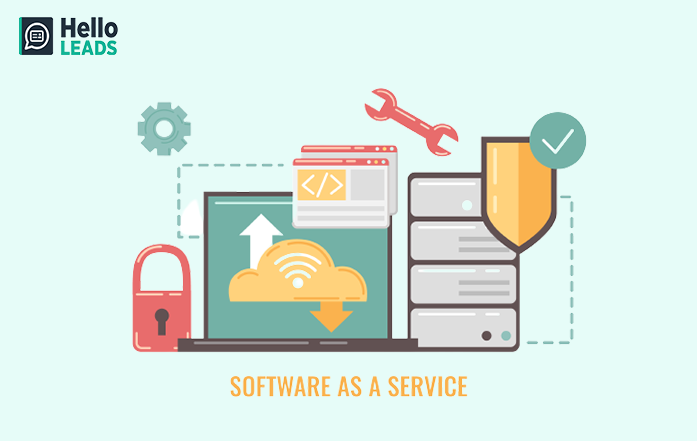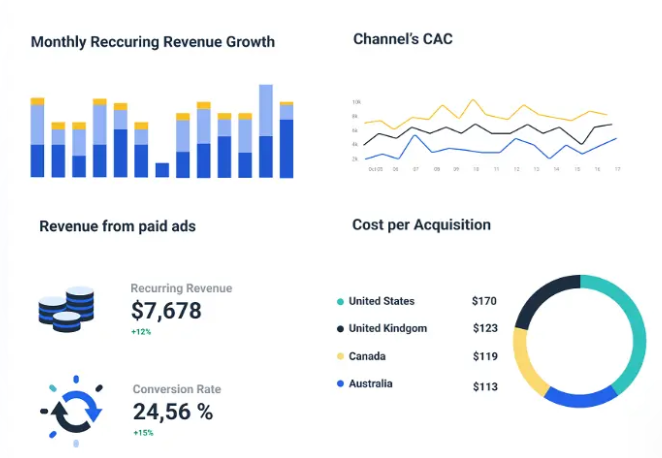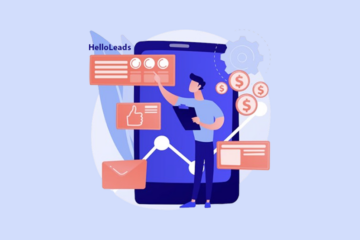
In the contemporary business landscape, Software-as-a-Service (SaaS) has captured the attention of entrepreneurs and investors, thanks to its recurring revenue model and impressive scalability. However, thriving in the realm of SaaS demands more than just offering an exceptional product or service. It necessitates a profound grasp of the SaaS metrics that underpin success in this industry. SaaS metrics are the compass, the key performance indicators (KPIs), meticulously tailored to gauge a company’s performance, growth trajectory, and financial well-being. Tracking these metrics isn’t merely advisable; it’s indispensable for a company’s prosperity and expansion. Whether you’re a fledgling startup or a seasoned SaaS powerhouse, monitoring these metrics empowers you to assess the efficacy of your business strategies, pinpoint areas ripe for optimization, and steer your efforts towards enhancing customer value and driving revenue.
Now, let’s embark on a journey through the top 10 essential SaaS metrics. As we delve into each one, you’ll uncover how tracking them can unveil invaluable insights, facilitate data-driven decision-making, and pave the way for enduring success.

- Monthly Recurring Revenue (MRR): MRR represents the consistent revenue your SaaS subscriptions generate each month. It serves as a vital metric for assessing your company’s financial stability and growth trajectory. To calculate MRR, simply multiply the number of active customers by the average revenue per customer.
Importance of MRR:
- Financial Stability: MRR provides a dependable and forecastable income stream, greatly aiding in financial planning and future projections.
- Customer Retention: MRR is particularly relevant for subscription-based businesses, as it aligns with higher customer retention rates and enhances customer lifetime value.
2. Annual Recurring Revenue (ARR): ARR represents the expected revenue generated by your SaaS subscriptions over a year. It provides a high-level snapshot of your company’s financial performance and is particularly valuable for investors and stakeholders. To calculate ARR, simply multiply your Monthly Recurring Revenue (MRR) by 12.
Importance of ARR:
- Long-Term Planning: ARR offers businesses a clear, forward-looking perspective on their annual revenue, aiding in strategic planning and decision-making for the long term.
- Investor Appeal: Investors consider ARR a critical metric as it reflects the financial stability and growth potential of a business over the course of a year.
3. Customer Acquisition Cost (CAC): CAC represents the total cost incurred to acquire a new customer, encompassing expenses from marketing, sales, and onboarding processes. Tracking CAC provides valuable insights into the efficiency of your customer acquisition strategies and enables optimization of your marketing expenditures.
Using Formula:
CAC = (Total marketing and sales expenses) / Number of new customers acquired
Benefits:
- Resource Allocation: Knowledge of CAC empowers businesses to allocate their resources effectively for acquiring new customers while ensuring profitability.
- ROI Calculation: CAC enables businesses to calculate the return on investment (ROI) for their marketing and sales efforts, aiding in informed decision-making.

4. Customer Lifetime Value (CLTV or LTV): CLTV represents the total revenue that a customer is expected to generate during their lifetime as a subscriber to your SaaS product. By comparing CLTV with CAC, you can assess the profitability of acquiring and retaining customers. To calculate CLTV, simply multiply the average revenue per customer by the average customer lifespan.
Importance of CLTV:
- High-Value Customer Identification: CLTV aids in the identification of high-value customers, allowing businesses to customize marketing efforts and provide tailored experiences.
- Pricing and Retention Strategies: Understanding CLTV assists in the development of appropriate pricing and retention strategies, ultimately maximizing overall revenue.
5. Churn Rate (or Attrition Rate): Churn rate represents the percentage at which customers cancel or discontinue using your SaaS product within a specified period. High churn can impede growth, making it essential to pinpoint the underlying reasons and implement strategies for reduction.
Using Formula:
Churn rate = (Number of customers lost during a period) / Total number of customers at the beginning of the period
Benefits:
Enhanced Customer Lifetime Value: Reducing churn contributes to higher customer lifetime value and fosters more predictable revenue streams.
6. Customer Retention Rate (CRR): CRR is the percentage of customers you retain over a specific period and serves as the complement to the churn rate. High retention rates indicate customer satisfaction and loyalty, both critical for long-term success. To calculate CRR, use this formula:
Importance of CRR:
- Customer Satisfaction Indicator: CRR directly measures the percentage of retained customers, often reflecting high levels of customer satisfaction.
- Reduced Customer Acquisition Cost (CAC): Maintaining existing customers is more cost-effective than acquiring new ones, making a high CRR beneficial for profitability.
7. Gross Margin: Gross Margin represents the percentage difference between revenue and the direct costs associated with delivering your SaaS product. It serves as a critical indicator of your business’s profitability and is invaluable for financial planning.
To calculate,Gross Margin = (Revenue – cost of goods sold) / Revenue
- Importance of Gross Margin:
- Profitability Assessment: Gross Margin offers insights into the profitability of products or services once production costs are considered.
- Informed Decision-Making: It assists businesses in making well-informed decisions regarding pricing strategies and cost-saving measures.
8. Average Revenue Per User (ARPU): ARPU calculates the average revenue generated per customer, offering valuable insights into spending patterns and overall customer monetization. .
To calculate, ARPU = Total revenue divided by Total number of customers
Benefits:
- Monetization Assessment: ARPU allows for the assessment of the effectiveness of monetization strategies on a per-user basis.
- Revenue Growth: Increasing ARPU can result in higher revenue without the necessity of acquiring new customers.
9. Customer Satisfaction (CSAT) Score: CSAT Score is a metric that measures customer satisfaction with your SaaS product or service, often collected through surveys or feedback. It serves as a vital tool for evaluating customer satisfaction and loyalty.
To calculate, CSAT Score = (Number of Satisfied Customers / Total Number of Respondents) x 100
Importance of CSAT score:
- Customer-Centric Focus: CSAT encourages businesses to place a strong emphasis on customer satisfaction, leading to improved customer experiences.
- Competitive Edge: High CSAT scores can set a business apart from its competitors, attracting new customers through positive word-of-mouth and enhancing its reputation.
10. Conversion Rate: Conversion Rate represents the percentage of website visitors or trial users who convert into paying customers. Optimizing this rate is essential for improving sales and marketing effectiveness, ultimately maximizing revenue potential.
Using Formula: Conversion Rate = (Number of Conversions / Number of Visitors) x 100
Benefits:
- Efficiency Gauge: Conversion rate serves as a barometer for measuring the success of marketing and sales efforts in transforming prospects into customers.
- Revenue Enhancement: Improving conversion rates can lead to increased revenue without necessarily increasing marketing expenditures.
Specific tips for improving metrics:

- Focus on reducing churn and retaining existing customers to maintain a consistent MRR growth
- Upsell and cross-sell to existing customers to increase their CLTV
- Optimize marketing channels and allocate budget to those with lower CAC
- Implement customer success programs and regular check-ins to maximize customer retention
- Analyze pricing strategies and offer flexible options to maximize ARPU
- Introduce product upgrades or premium features to increase customer ARPU
- Prioritize excellent customer service and prompt response to enhance CSAT
- Regularly review pricing and cost structures to maintain a healthy gross margin
Tracking these key SaaS metrics empowers your company to make data-driven decisions, identify growth opportunities, and optimize performance. By monitoring these KPIs regularly, you can understand your customers better, enhance your product, and drive the long-term success of your SaaS business. These metrics serve as guideposts, helping you identify trends, measure the effectiveness of your strategies, and uncover areas for improvement.
Share this blog :










